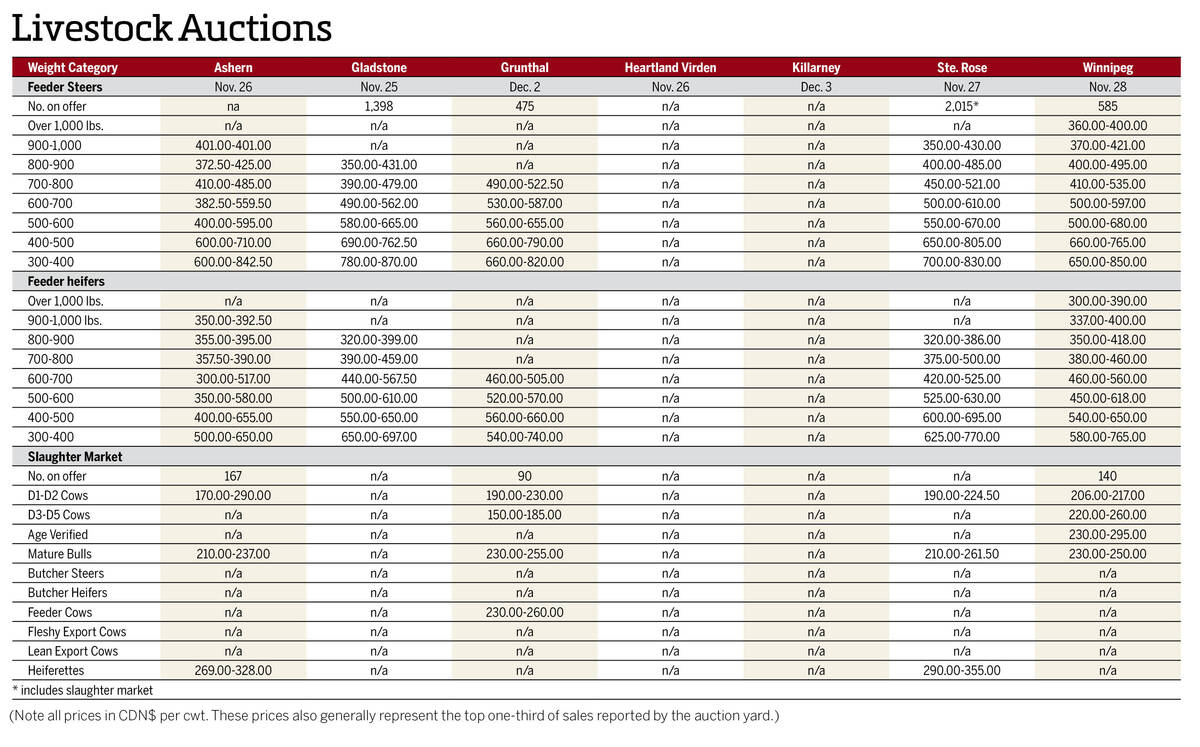The week ending Sept. 26 was a good one for canola, despite the ICE Futures taking a step backward.
On the whole, the November canola contract saw a net gain of $18.30 per tonne last week as it settled at $600.90. It’s January contract rose $19.30 to $613.70 a tonne.
Canola’s price rise was rather remarkable given the number of factors that should have pushed it lower. One of those was harvest pressure. Combining across the Canadian Prairies was well past the halfway mark.
Read Also

Manitoba cattle prices, Dec. 3
Cattle prices from Manitoba’s major livestock auction marts during the week Nov. 25-Dec. 2, 2025.
Another factor was the strike by grain workers at the Port of Vancouver. Union members set up their picket line Sept. 24, quickly rousing a sense of urgency in the grain industry. As with the recent labour dispute involving Canada’s two major railways and the Teamsters union, there were quick calls to end the work stoppage from a variety of farm organizations and politicians.
While the canola market pondered the short-lived job action with the railways, it made its choice on the grain workers strike in Vancouver by ignoring it. The widespread assumption among market participants is that the strike won’t last long. The railcars filled with canola, other oilseeds, cereals and pulses are piling up. With more than half of Canada’s grain exported through Vancouver, there are loud calls to resolve the matter.
On the first day of the strike, the federal labour minister ordered a mediator to assist the Grain Workers Union and the Vancouver Terminal Elevators Association in sustaining their negotiations. It remains to be seen whether the federal government will resort to back-to-work legislation.
Lurking in the background is China, with its ongoing investigation into alleged canola dumping by Canada. The market was ignoring that as well — for now. Sooner or later, the Chinese government will announce its edict on the investigation. Whether the verdict is good or bad for canola futures, the market will react.
As the above issues were set aside, other factors lent support.
Continuing dryness in South America is posing a threat to their soybean and corn crops. Early projections of a Brazil bean crop of around 170 million tonnes might be already jeopardized by drought unless October rains save the day.
Palm oil production issues in Indonesia played into sharp spikes in the Malaysian market, with spillover finding its way to the other oilseeds in Europe and North America.
In the midst of this was more short-covering by the speculative funds, although increased farmer selling put a bit of a crimp in that. One trader called the week’s gains in canola a gift, one that perhaps that shouldn’t be squandered.
















